The beluga whale is a toothed-whale species that inhabits the Arctic and Sub-Arctic waters. It is one the mid-sized species of whales. It has a stocky and fusiform (cone-shaped tapering towards the back) body shape. It has an usual white color and rounded forehead. It also lacks a dorsal fin. Here we gathered information about what beluga whales look like, do they have teeth, and some of their other distinctive features.
What Do Beluga Whales Look Like?
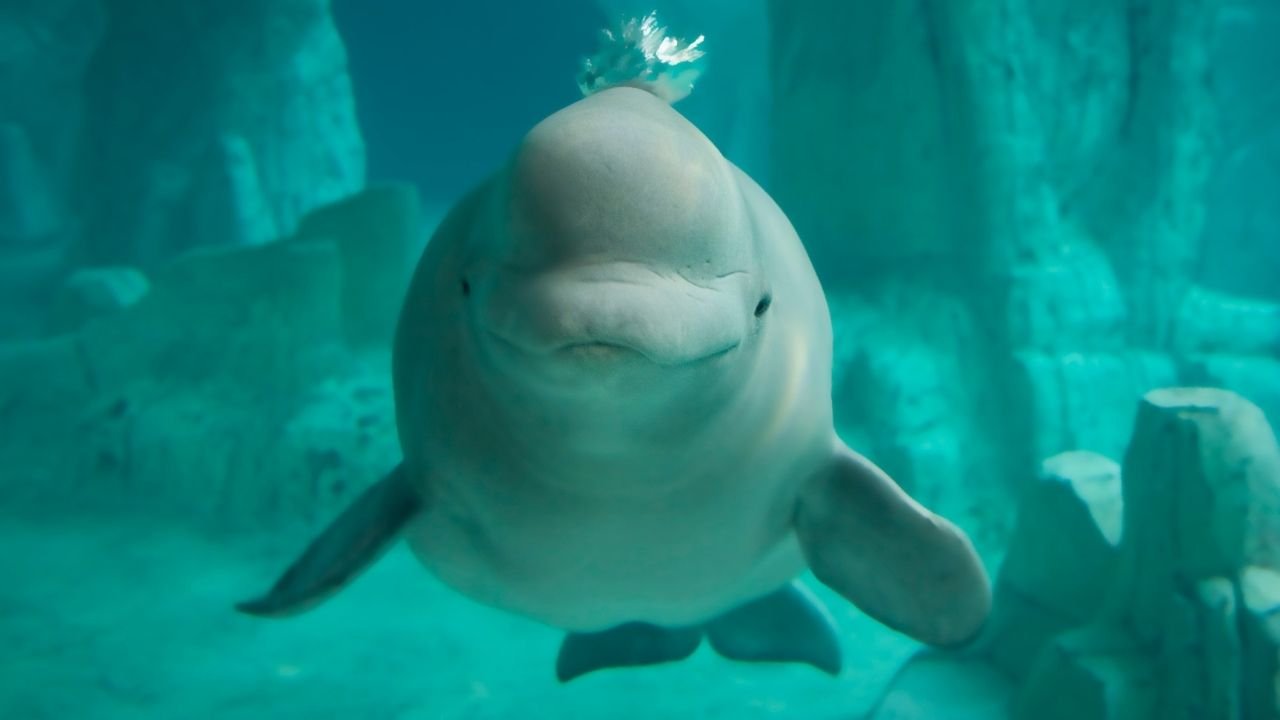
The beluga whale is also known as a “white whale” because of its unusual white color. It has a smooth body, rounded head, and no dorsal fin. It has relatively small eyes and small external ears.
Let’s take a look of the physical characteristics of belugas:
Size

Beluga whale is one of the smallest whale species with an average size of 13 to 20 feet. They weight from 1 to 1.5 tons. The size of adult males ranges from 11 to 18 feet and of females from 9.8 to 13.5 feet.
Belugas have sexual dimorphism and male individuals are about 25% bigger than females. Males are also sturdier than females.
Shape
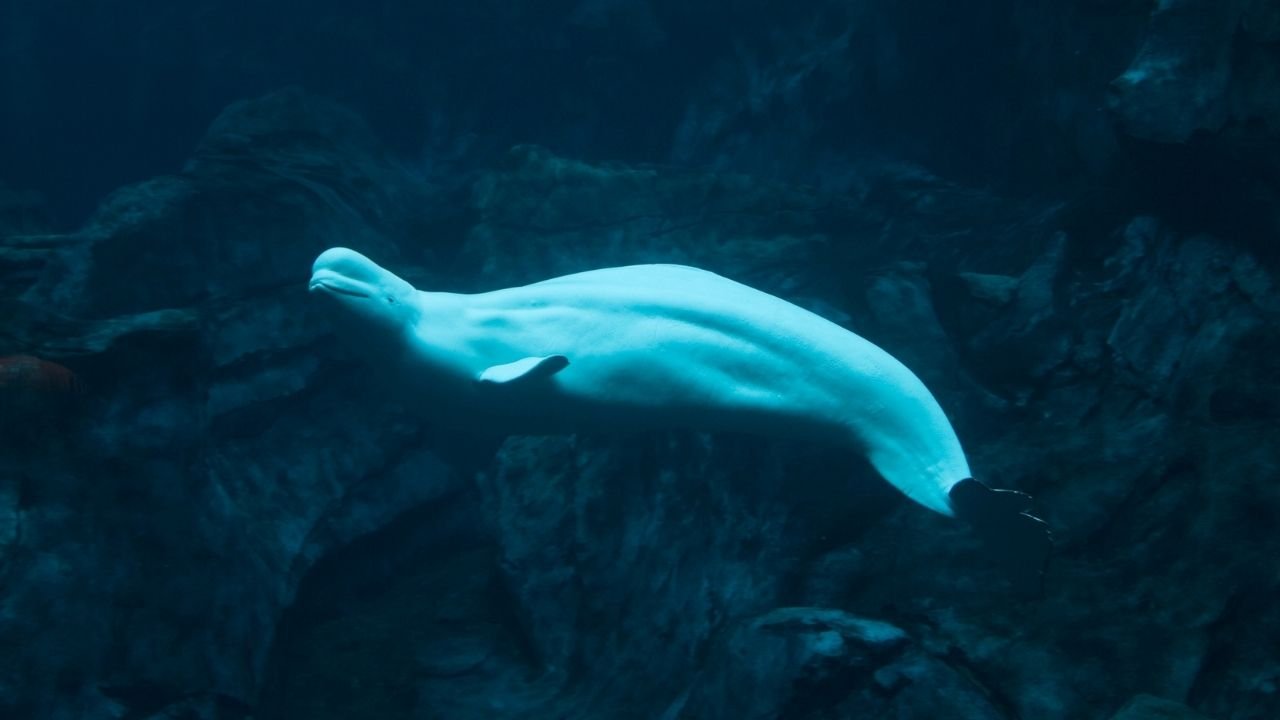
Belugas have a smooth and fusiform body shape. When well-fed, they have a round body shape tapering less smoothly towards the head. At the base of the neck, their body suddenly tapers and looks like shoulders. This feature is unique to beluga.
Color

Belugas have a complete white or whitish-gray color. Babies are born gray but when they become one month old, their skin color changes to dark-gray or blue-gray. Female individuals attain their special white coloration at the age of seven years and males at nine years. White skin color is an important adaptation to the Arctic habitat. It resembles the ice and provides camouflage against predators (polar bears and killer whales) in the polar ice caps.
Skin Texture

Belugas have smooth, flexible, and rubbery skin texture. They have a very thick layer of blubber beneath their skin, which contributes to more than 40% of their body weight. It often wrinkles into rubbely folds in their belly and along the sides.
Melon
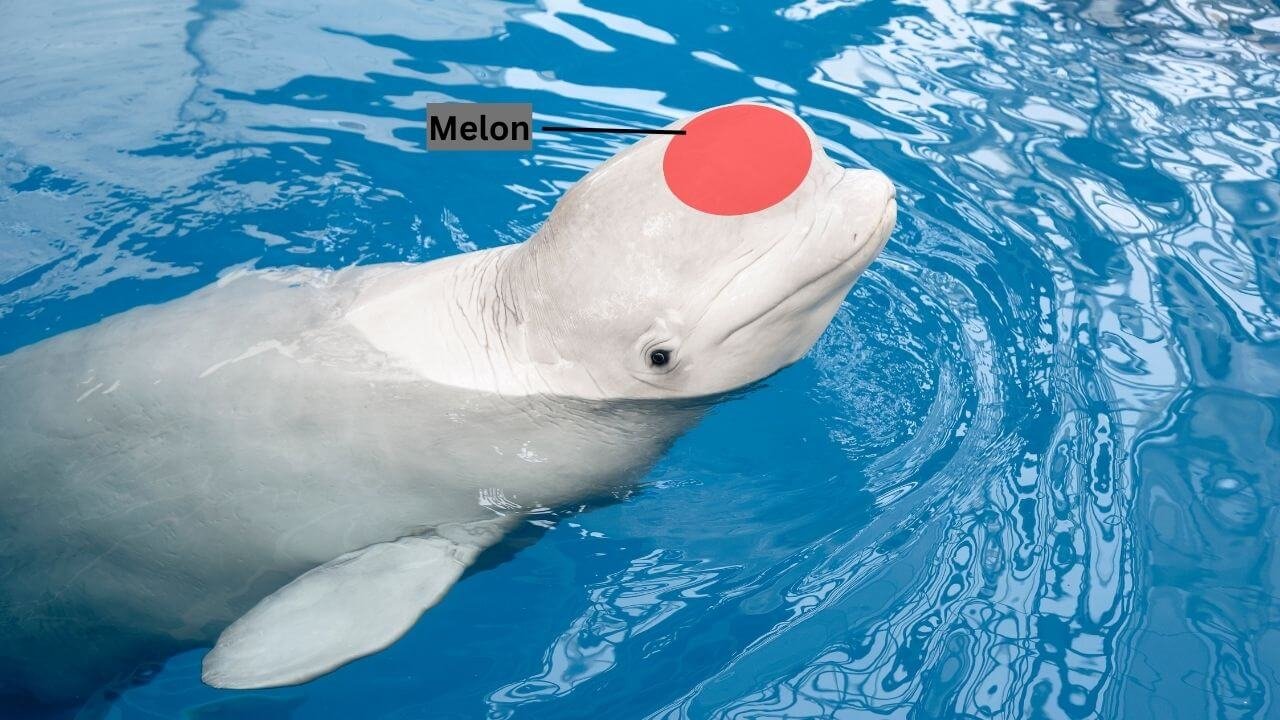
Melon is an organ in cetaceans used for echolocation. This organ occupies a compartment at the center of the forehead. Unlike other cetaceans, belugas have extremely bulbous and lobed melons, which give a prominent rounded shape to their forehead.
The melon of belugas is malleable, which means its shape changes when they emit sounds. It is a distinctive feature of belugas.
Blow Hole
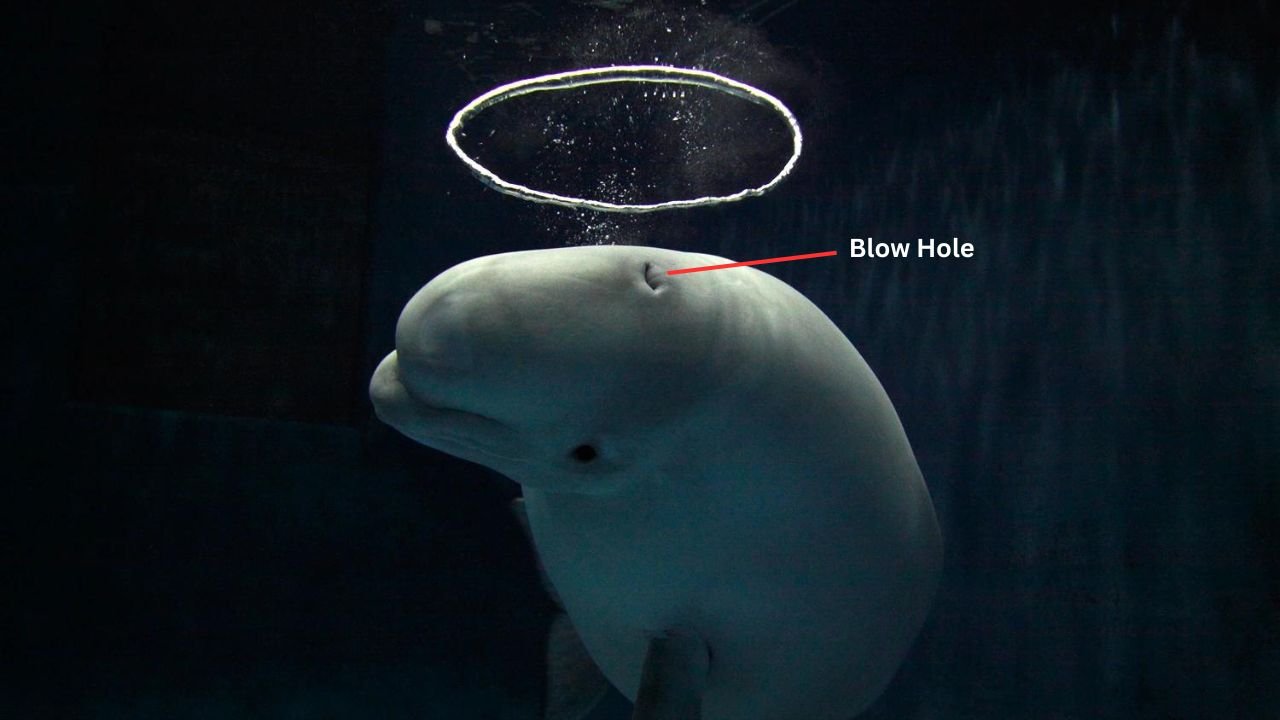
Belugas have a single blowhole found at the top of their head behind the melon. Their blowhole has a muscular covering that enables it to be totally sealed.
Distinctive Features Of Beluga Whales
The following are some of the distinctive features of belugas:
Lack Of Dorsal Fin And Having Dorsal Ridge
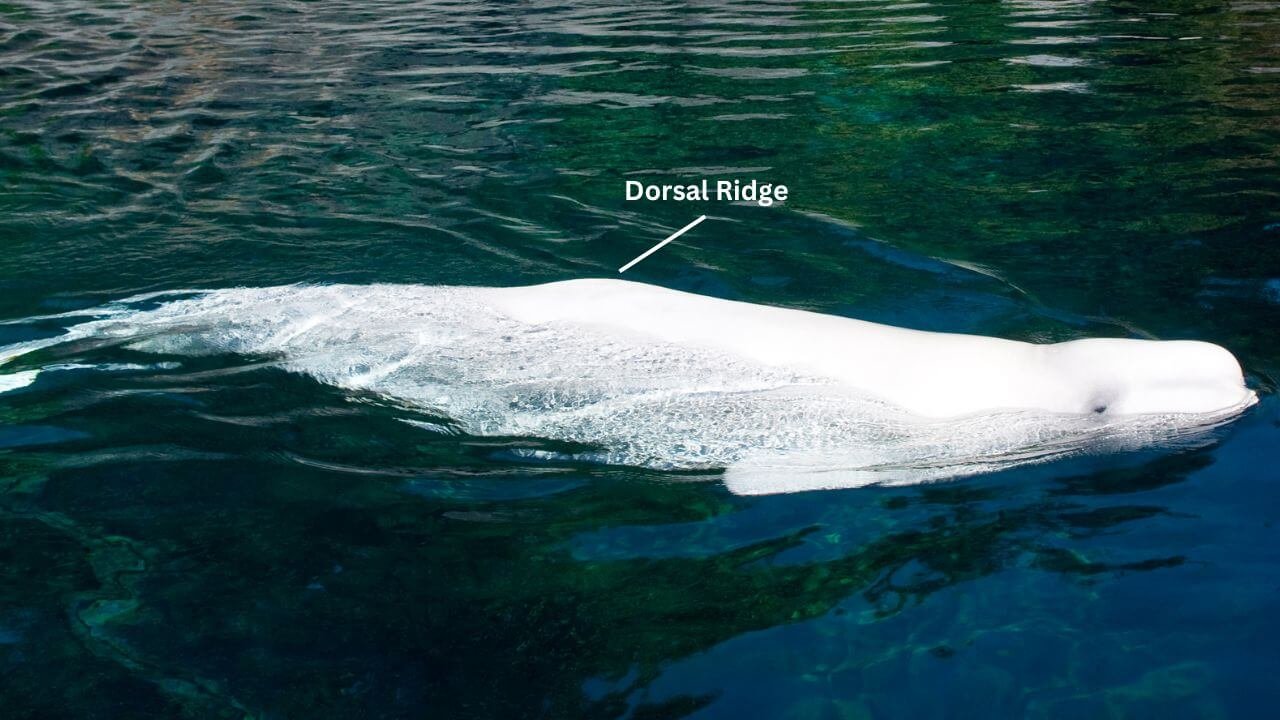
Belugas do not have dorsal fins, instead they have dorsal ridge. The crest of their dorsal ridge is hard. They can use it along with their head to make holes in about 8 cm thick ice.
Lacking dorsal fin is believed to be an adaptation for movement under the ice and possibly for preserving heat in the frigid Arctic waters.
Fins And Tail
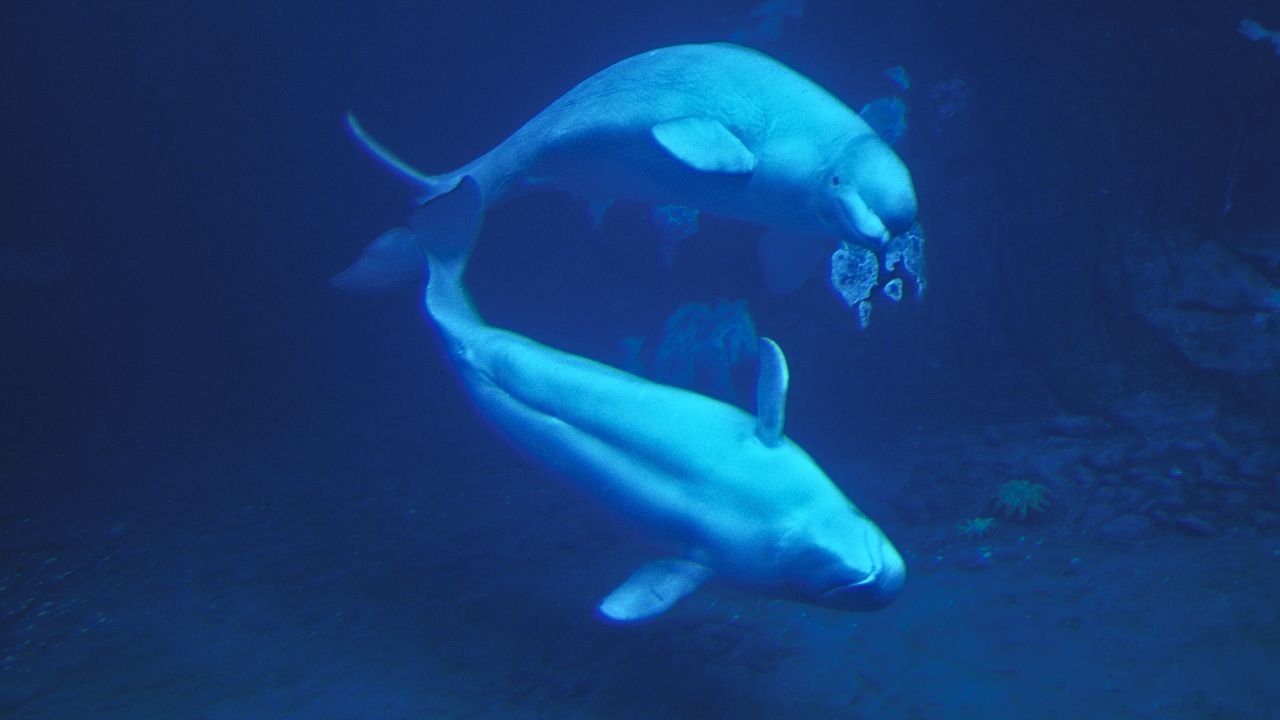
Belugas have small fins relative to their body size. The fins are small, broad, oar-shaped or square-shaped with slightly curled tips. They use their fins as a rudder to steer. They also use it in synchrony with the tail fin for quick and easy movements in shallow waters. Fins also regulate body temperature. Muscles in the fins have arteries and veins that would be dilated or contracted when needed, to lose or gain heat.
The tail fin is broad and flat in shape with two oar-like lobes. It has a prominent curvature at the lower edge. The tail fin lacks bones and is made up of connective tissue with a dense, fibrous, and hard texture. Longitudinal muscles of the back are supplied to the tail fin, which controls its movements. The tail fin also has the mechanism of regulating body temperature similar to the pectoral fins.
Mouth
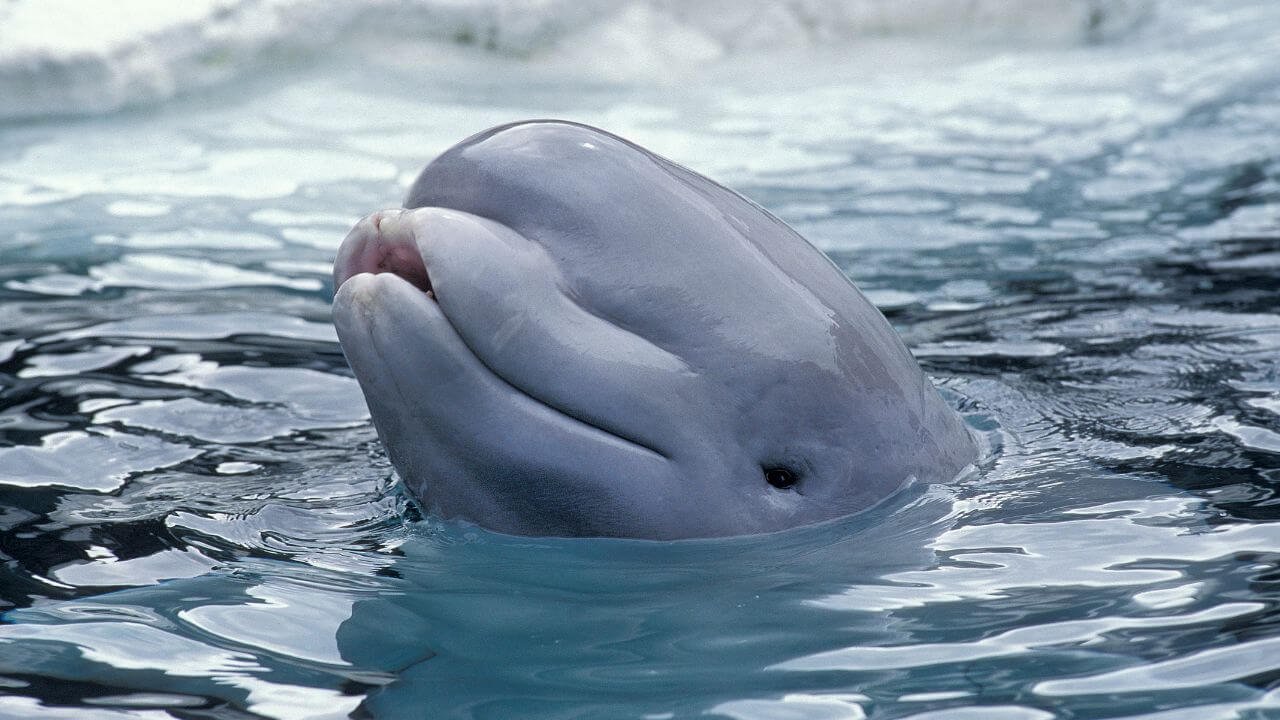
Beluga whales have a rostrum (a beak-like projection or a stiff snout) with prominent lips. Unlike other cetaceans, belugas can change the shape of their mouth. They can purse their lips into the shape of “O”. It allows them to display a range of expressions.
Flexible Neck
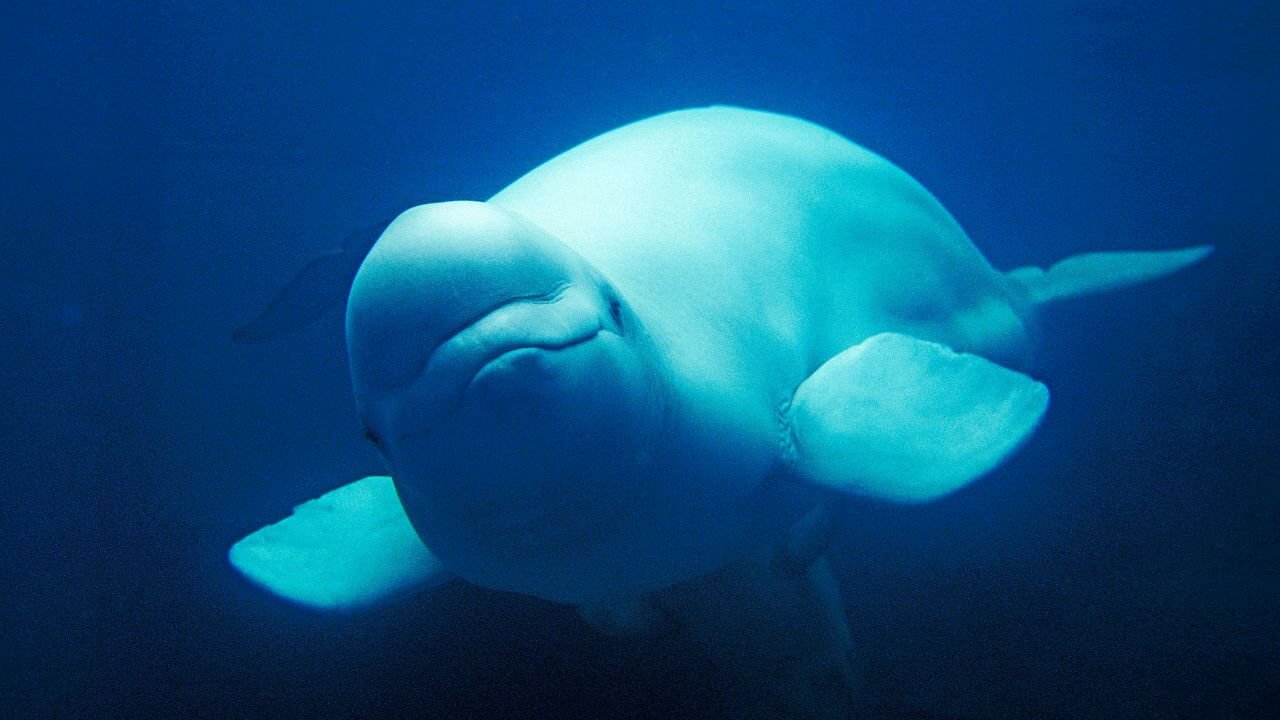
Unlike many other cetaceans, belugas can turn their head without rotating their body. This ability is due to seven vertebrae in their neck that are not fused together.
Skin Shedding Or Moulting
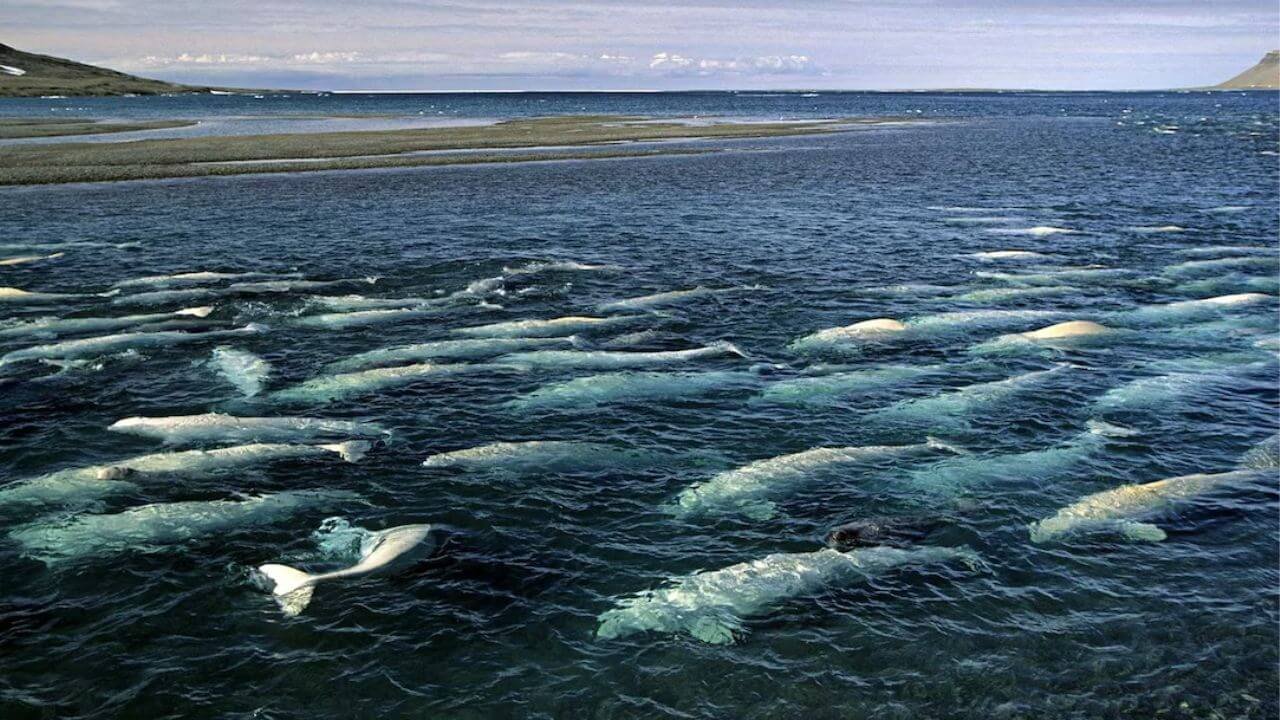
A beluga seasonally shed its skin, which is its unique feature from other cetaceans. During winter, the epidermal layer of their skin becomes thick and turns yellowish, especially on the back and fins. During summer, they migrate to the river estuaries where they rub themselves on the gravel to remove the old yellowish layer of skin.
Do Beluga Whales Have Teeth
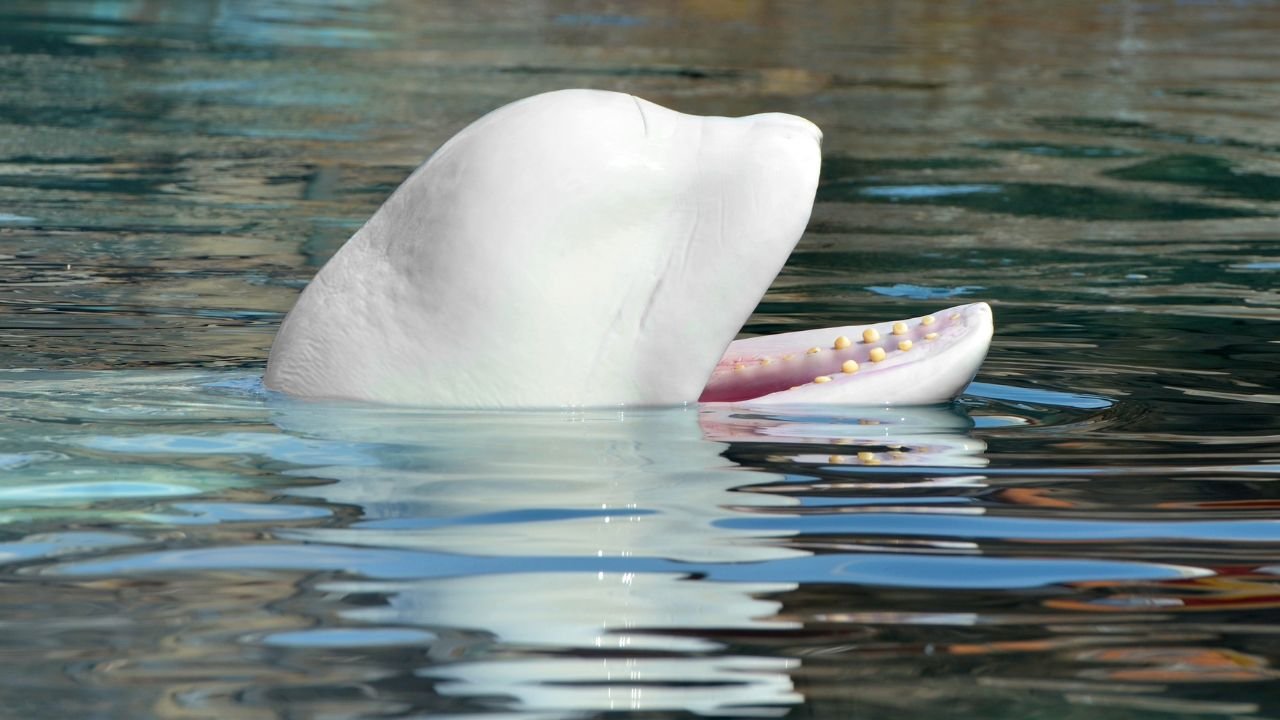
Yes, beluga whales have teeth. On each side of the jaw, they have eight to ten small teeth. In both the upper and lower jaw, they have 18 to 20 teeth. The total number of teeth is 36 to 40. Their teeth are slightly curved in shape and have sharp edges. Their teeth are not replaced when lost. The teeth of a calf start to grow between the age of 1 and 2 years.
Belugas use their teeth for catching and controlling their prey. They do not chew food, just tear it with their teeth and prefer to swallow it as a whole. The teeth of belugas have growth rings known as “Growth Layer Groups” (GLG). Their age is estimated from these growth rings.






Leave a Reply